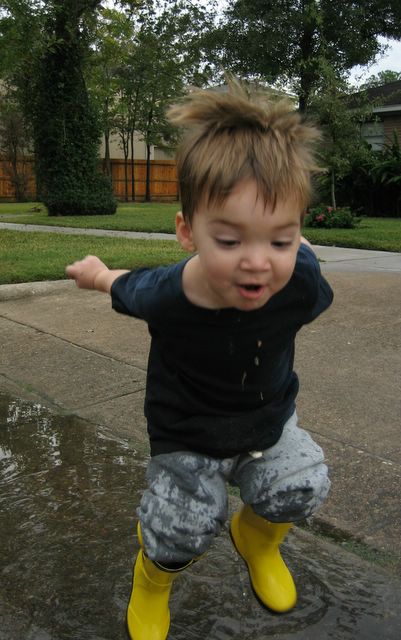Giving It Away: The Earth Day Groceries Project
who are capable of doing new things, not simply
of repeating what other generations have done
- men who are creative,inventive and discoverers.”
Jean Piaget
“What we want is the child in pursuit of knowledge,
Jean Piaget
“What we want is the child in pursuit of knowledge,
not knowledge in pursuit of the child.”
George Bernard Shaw
George Bernard Shaw

“The world, thanks to the Internet, has had its doors opened . . . [and] the fabric of the world has changed forever.” (p 42)
Mark Ahlness certainly discovered the potential of the Internet and brought it to the forefront of his classroom with some worthwhile endeavors, including his inspirational Earth Day Groceries Project. His idea, which began in 1994, involves students decorating paper grocery bags with environmental artwork and creative slogans to celebrate Earth Day. The bags are then returned to the supermarket for all of the customers to enjoy. What a motivating project! Not only is it “a great science activity, a great environmental education unit, and a great community-service opportunity,” (p 28) it ensures that the students will do their best work because they know that their bags will actually be used and appreciated by members of the community.
While the Earth Day Groceries Project did not involve technology at its inception, it does so today and its inclusion has catapulted the idea across the globe. How so? Mark Ahlness described his idea on two listservs and requested interested parties to share their results with him. The world heard him and the reactions have been remarkable. Many schools responded with positive feedback. Mark Ahlness shares the e-mails with his students, which, of course, not only fires their enthusiasm, it furthers their literacy skills as they read about others’ participation.
technology at its inception, it does so today and its inclusion has catapulted the idea across the globe. How so? Mark Ahlness described his idea on two listservs and requested interested parties to share their results with him. The world heard him and the reactions have been remarkable. Many schools responded with positive feedback. Mark Ahlness shares the e-mails with his students, which, of course, not only fires their enthusiasm, it furthers their literacy skills as they read about others’ participation.
Much like the proverbial stone tossed in the water, the breadth of technology’s reach is profound as the endless ripples unfold and expand. . . What I love about this story is how technology once again reveals its massive potential. It creates infinite, engaging opportunities to teach new literacies. As we dive into the digital world, opportunities naturally evolve and unexpected paths of learning present themselves. These, I feel, provide some of the best teachable moments. And I love the role I'm in: I'm not a dispenser of knowledge, but rather a partner with my students on a learning path, exploring the world from our classroom.
Mark Ahlness certainly discovered the potential of the Internet and brought it to the forefront of his classroom with some worthwhile endeavors, including his inspirational Earth Day Groceries Project. His idea, which began in 1994, involves students decorating paper grocery bags with environmental artwork and creative slogans to celebrate Earth Day. The bags are then returned to the supermarket for all of the customers to enjoy. What a motivating project! Not only is it “a great science activity, a great environmental education unit, and a great community-service opportunity,” (p 28) it ensures that the students will do their best work because they know that their bags will actually be used and appreciated by members of the community.
While the Earth Day Groceries Project did not involve
 technology at its inception, it does so today and its inclusion has catapulted the idea across the globe. How so? Mark Ahlness described his idea on two listservs and requested interested parties to share their results with him. The world heard him and the reactions have been remarkable. Many schools responded with positive feedback. Mark Ahlness shares the e-mails with his students, which, of course, not only fires their enthusiasm, it furthers their literacy skills as they read about others’ participation.
technology at its inception, it does so today and its inclusion has catapulted the idea across the globe. How so? Mark Ahlness described his idea on two listservs and requested interested parties to share their results with him. The world heard him and the reactions have been remarkable. Many schools responded with positive feedback. Mark Ahlness shares the e-mails with his students, which, of course, not only fires their enthusiasm, it furthers their literacy skills as they read about others’ participation.Much like the proverbial stone tossed in the water, the breadth of technology’s reach is profound as the endless ripples unfold and expand. . . What I love about this story is how technology once again reveals its massive potential. It creates infinite, engaging opportunities to teach new literacies. As we dive into the digital world, opportunities naturally evolve and unexpected paths of learning present themselves. These, I feel, provide some of the best teachable moments. And I love the role I'm in: I'm not a dispenser of knowledge, but rather a partner with my students on a learning path, exploring the world from our classroom.
"Who dares to teach must never cease to learn.”
John Cotton Dana
One of the things my students get really excited about is connecting to the live webcam at the Plaza Mayor in Madrid. They enjoy seeing what the people are doing and figuring out what time it is there. The time is presented using the 24-hour clock, which provides me with an opportunity to launch into a mini-lesson/review on Spanish time. Because there's an authentic purpose,my students are inspired to learn. And that's my goal - to awaken in them a joy for learning.
I loved this reflection from the chapter and wanted to include it in the blog. Its message rings so true and clear, yet is one that is often forgotten in the day-to-day classroom:
To Be A Teacher
“If you want to be a teacher, you first have to learn how to play hopscotch, learn other children’s games, learn how to watch a snail crawl, read “Yertle the Turtle,” and watch “Bullwinkle.” If you want to be a teacher you have to blow “she loves me, she loves me nots” with a dandelion or pull the individual petals of a daisy, wiggle your toes in the mud and let it ooze through them, stomp in rain puddles, and be humbled by the majesty of a mountain. . . If you want to be a teacher, you have to put aside your formal theories and intellectual constructs and axioms and  statistics and charts when you reach out to touch that miracle called the individual human being. (Schmier, 995, p. 240)
statistics and charts when you reach out to touch that miracle called the individual human being. (Schmier, 995, p. 240)
 statistics and charts when you reach out to touch that miracle called the individual human being. (Schmier, 995, p. 240)
statistics and charts when you reach out to touch that miracle called the individual human being. (Schmier, 995, p. 240)As an aside, I found this interesting article I thought you'd enjoy regarding current work Mr. Ahlness is pursuing with blogs and fostering multiliteracies: Teachers are Reaching Out to Students with a New Class of Blogs








